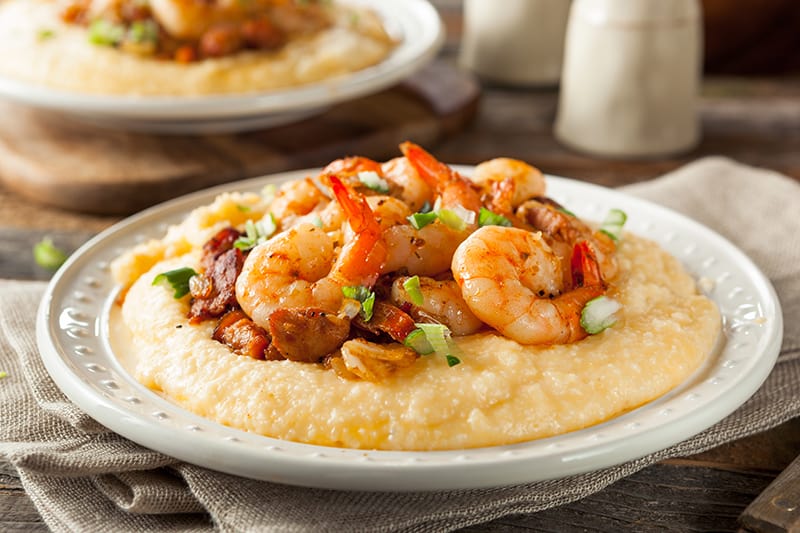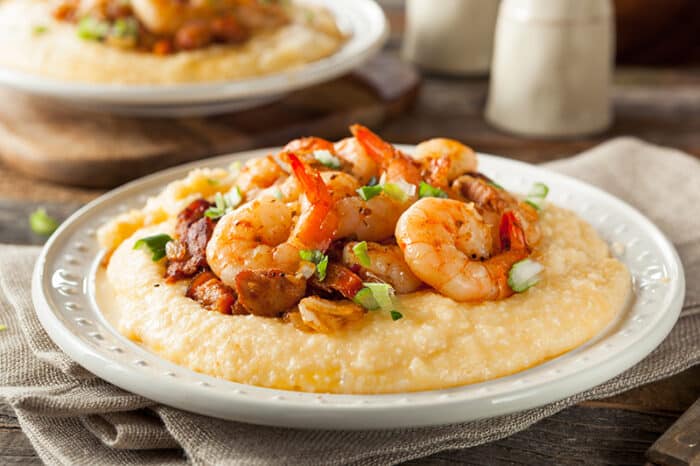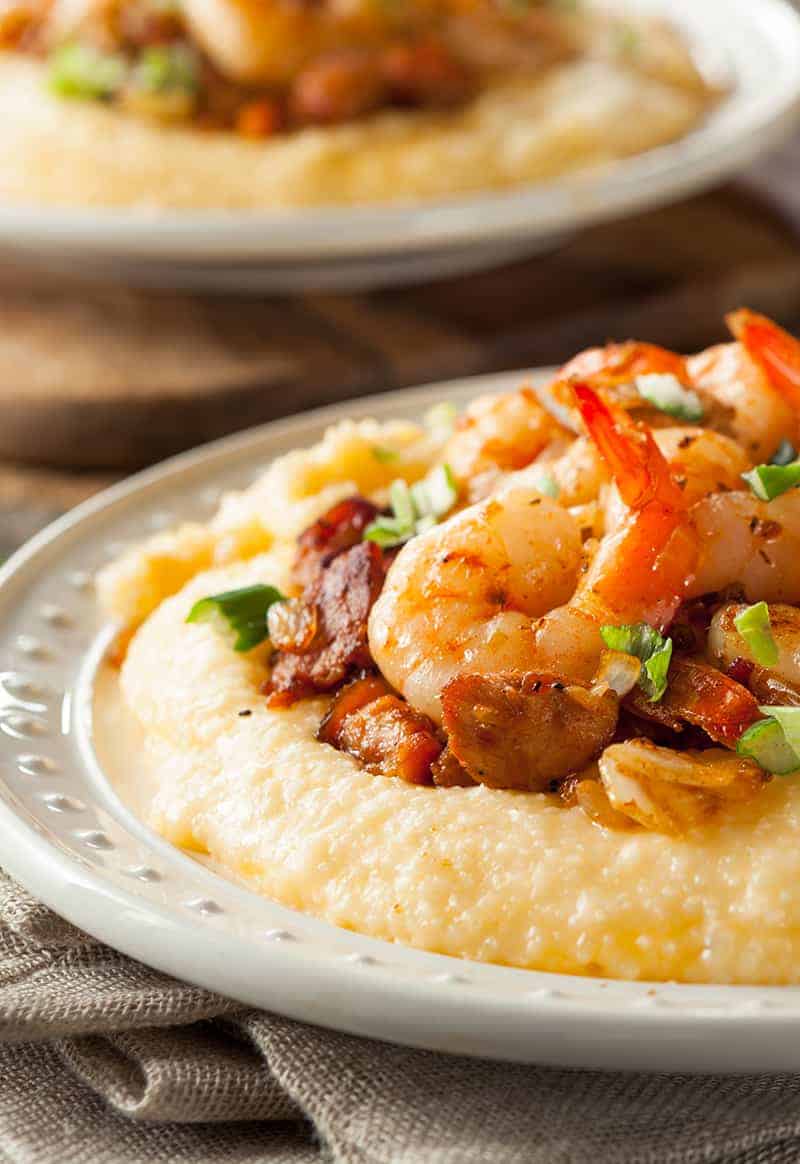There are all kinds of strange-looking foods in the USA that baffle newcomers to this massive country. Some are regional, belonging only to some small, esoteric part of the USA, while others seem to crop up everywhere. Of all the different, weird dishes throughout the USA, many of them involve corn. While some of them are simply, like easy and convenient Instant Pot corn on the cob, one of the most common and easily the strangest looking is Grits.
Often served as a side dish, or sometimes even as a light meal in their own right, this oddly sludgy-looking dish is utterly unique to the USA and just as confusing.
So what are grits?

What Are Grits?
Grits are a side dish that is basically porridge of boiled cornmeal. This cornmeal is either treated or untreated, and, from there, it can change in many different ways. It can be made with milk, butter, and cheese and turned into cheese grits, or it can be mixed with sugar and milk and made into a sweet breakfast item.
It is one of those dishes that seem to crop up in every course throughout the day. If you really wanted to, you could easily eat grits for every meal, with each of them being fundamentally different. But boiled cornmeal doesn’t exactly sound very tasty, does it? Is it literally just cut up corn?
What Are Grits Made Of?
The thing that makes grits especially interesting is that there are technically two different types of grits – grit made from regular boiled cornmeal and hominy grits.
Hominy grits are grits made from hominy, which is corn that has undergone a process known as nixtamalization.
While this might sound extremely scientific and confusing, all it means is that corn has been treated with an alkali, which causes the outer walls of the corn to break up and release more nutrients, as well as get way more delicious.
This process was invented by native Americans and is actually incredibly important for those that live off of a corn-rich diet, as without nixtamalization, the body is unable to process the corn properly, and you can suffer from Niacin deficiency. Regular nixtamalization of corn for making grits is one of the key reasons why people don’t suffer from Pellagra anymore, which is an incredibly unpleasant malnutrition disease.
Alongside the choice between hominy grits and just regular boiled cornmeal, you also need to decide what will go into your grits.
A common addition is butter and cheese, which produces cheese grits. This dish is a bit like cauliflower cheese, in that it is stringy and cheesy and is basically just an excuse to eat way more cheese than you should be.
However, some people actually make dessert grits from chocolate, tahini, sugar, and cream. This strange concoction looks even stranger than other grits variations but is surprisingly tasty.
You can even make fried grits, a strangely greasy and truly southern dish made from leftover grits that have been deep-fried. Grits are excellent at absorbing water, so if you cook it extra long on the stove, it tends to bulk up and forms this almost marshmallow-like texture to it that is remarkably good at holding up to frying oil.
Assuming all of this has convinced you to try the deliciousness that is grits, how do you go about making it?
 How To Make Grits
How To Make Grits
Making basic grits is actually incredibly easy, as it is nothing more than boiling some cornmeal.
- In a wide saucepan on over medium flame, combine your liquids and your grits. The ideal ratio is about five parts water (or milk, if you like it rich) to one part grits. Make sure you include a healthy amount of salt, regardless of whether you are making it savory or sweet grits, as, without the salt, the corn will taste bland and gummy.
- Cooking while continuously stirring over a medium flame for about half an hour, or until the mixture is thick, but without being too lumpy or entirely homogeneous.
- Once it is almost completely cooked and all the water has been absorbed, you can add your extra ingredients like cheese, butter, or sugar.
- A great test to see if your grits are done is to tilt your pan to one side and trail a wooden spoon through the bottom of the pan. If the spoon leaves an empty space behind it, with no liquid rushing to fill the gap, then your grits are probably just about done.
- To serve grits, you can simply dump it into a convenient bowel, but many people like to jazz it up a little bit.
- For color and an oniony bite, consider sprinkling some chopping spring onions or even some chives, as well as even more cheese. Honestly, just keep adding cheese until you can’t even see the grits anymore – cheese makes basically everything better.
No matter what, make sure you serve your grits hot and fresh. In the South, serving up cold grits is a sign of an inhospitable host, and for a good reason.
No one likes cold grits!

 How To Make Grits
How To Make Grits










Ellie says
Thank you for all these tips and good information!